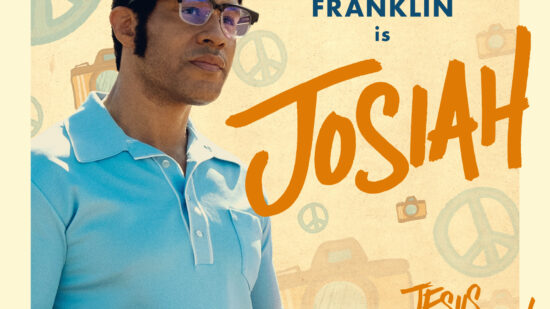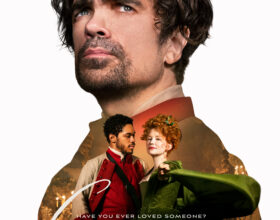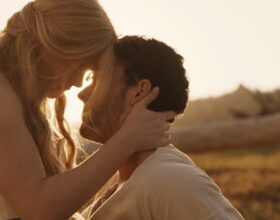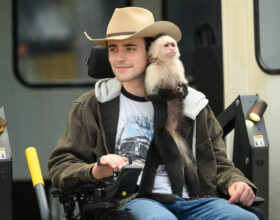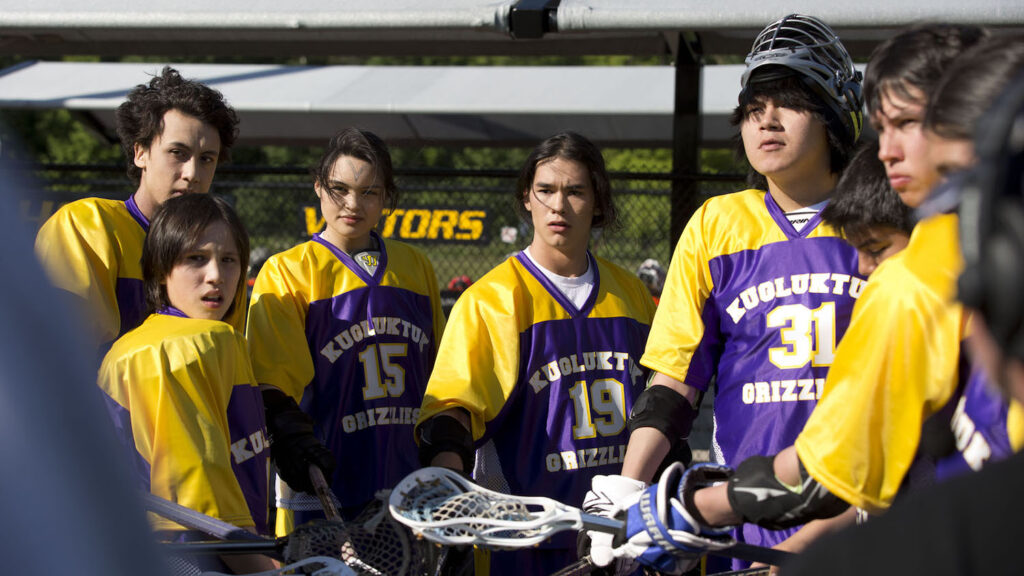 By Jacob Sahms
By Jacob Sahms
Miranda de Pencier had never been to the Arctic or even met an Inuit when she saw the ESPN piece on the Kugluktuk Grizzlies, a team of lacrosse-playing high schoolers who overcame toxicity in their lives to succeed on and off the field. Excited to see how these young people were transformed by sport, the director traveled north from her home in Toronto, Canada, to meet the real-life players and was blown away by what she learned.
“I was just a bitty girl from Toronto,” de Pencier shared with a chuckle. “They were very open, and willing to share their pain. I had a Waspy upbringing where we don’t talk about our problems and pain, but these young indigenous youth were extraordinary human beings.”
While the stories she heard about suicide and alcoholism made de Pencier feel over her head, she discovered that the teens were willing to share their story through life rights so that other people might see their story, find hope, and move forward. Recognizing that she needed more than her own perspective, de Pencier partnered with Inuit producers to make her feature-length directorial debut an honest, in-touch story that the players could be proud of while communicating the obstacles they had overcome. She had seen their losses and heard their stories, and wanted to make sure that the audience understood the extent of what they’d been through so that they could celebrate the victory in the long run.
“It was the most difficult of balances,” the director explained, discussing how the white Canadian Russ Shepherd arrives in Kugluktuk with a lacrosse background he shares with struggling Inuit high schoolers, even as the students coalesce to help save themselves. “We don’t need any more white savior movies; the Inuit are perfectly capable of saving themselves.”
Sharing more about Shepherd, de Pencier pointed out that the teacher became the student of those he had traveled to teach. “He was humbled quickly, and knew he had to listen to the students. Building the Grizzlies program, he made it kid-led, and had the kids do the fundraising, so that it would still thrive when he left. Russ happens to have a skill to teach, but the kids overcame their challenges and are the real heroes.”
Initially, the director said she was focused on the story from the white coach’s perspective because it’s how she related to the story. Coming to know and love the people, she listened to her co-producers, Alethea Arnaquq-Baril and Stacey Aglok MacDonald, who helped as they hired a huge number of Inuit crew members and local actors to make sure they weren’t conveying a white perspective. They cast the net far searching for actors, looking at six hundred students throughout the Arctic Circle and using it as an opportunity to provide acting lessons to many of them. At the end of the session, de Pencier asked how they could help them moving forward, even if they weren’t cast in the film.
The students said that giving them a chance to accept themselves and have a voice had been invaluable, as they talked about their personal stories of losing their homes, of family members who were addicts, of friends they’d lost to suicide. One student admitted that he’d tried to kill himself the week prior; others talked about specifically who they’d lost, and the group collectively cried. But de Pencier remembers how one of them walked into the center of the group and showed the heart of the Inuit people, and the film, because of how he refocused everyone’s attention.
“This thirteen-year-old kid walked into the middle of the circle and asked, ‘How many of you have lost someone?’ Everyone’s hand goes into the air. He said, ‘Look, the person next to you is someone who understands,’” recalled de Pencier. “They broke out in this group hug and started chanting, ‘New Start! New Start!’”
Watching these students come together in real life, before the filming started, de Pencier was left with the perspective that the restorative power had come from the students themselves, helped by teachers who didn’t try to fix or solve their problems, but who let the students do that on their own.
In the end, de Pencier channeled her own experiences as a child actress, pointing her veteran actors and her first-time novices back to realism and authenticity of the story itself. “If we can’t make people feel it, then they’re not connected,” she said. “We have to feel those losses and then see the kids’ resilience so that we see at the end of the film what they’ve overcome.”
“And understand the extent of their heroism.”
The Grizzlies opens in theaters on July 31.

